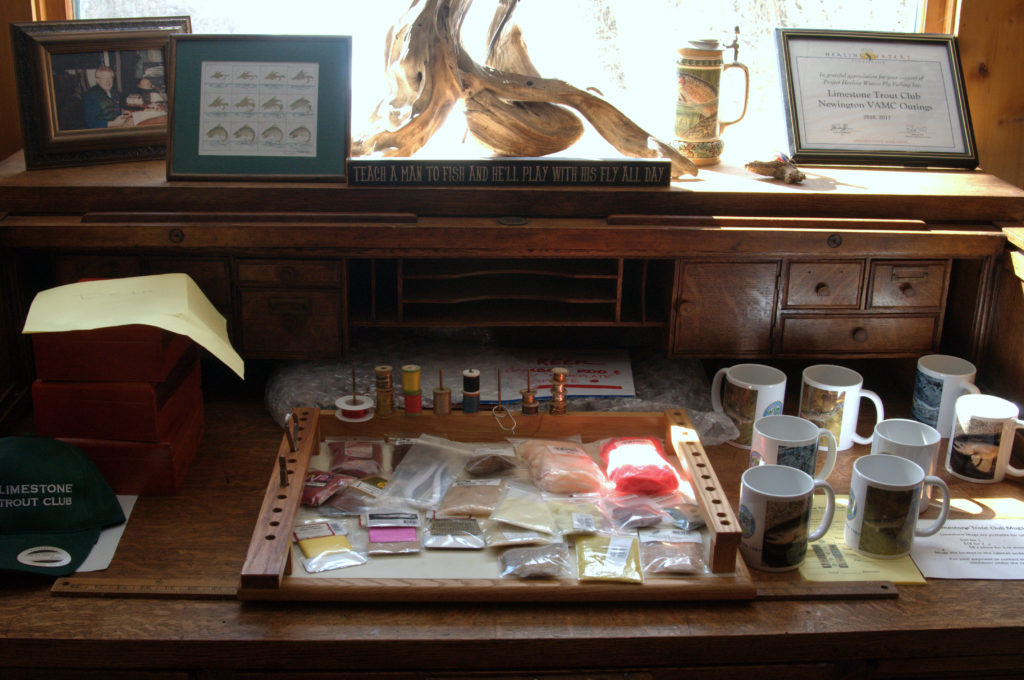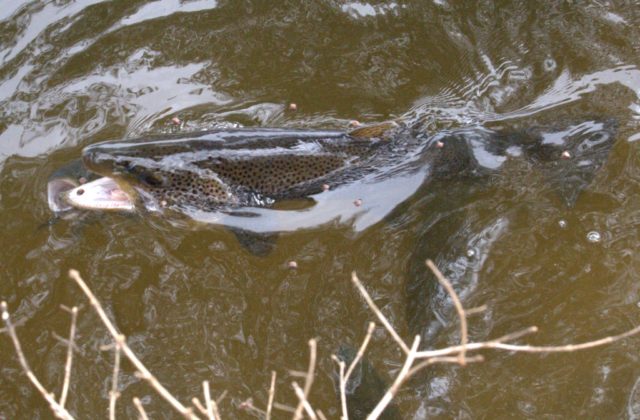Trout Fishermen on the Watch for Spring
By Doug McDevitt
The sound of crusted snow crunched under my boots. The snow gave me a modicum of traction on the hard-packed ice as I approached a closed gate that displayed an ominous sign stating, “ICE IS NOT SAFE.” I certainly knew that going out on the water now wouldn’t be any fun at all and clearly very dangerous, but soon it would be loads of fun.
I had arrived at the entrance of the Limestone Trout Club in East Canaan. It was a clear, cold March afternoon, and I was glad to get out of the car to breathe in the fresh pine-scented air and hear the spring calls of chickadees and cardinals. I had gotten there a little early and was waiting for Dean Keister, membership chairman of the club, to arrive and give me a tour of their lodge and the six ponds that speckle the club’s 94 wooded acres.
I was to meet Keister at 11 that morning, and he arrived right on time. As I was to learn later, Dean is a very exacting gentleman, having spent a career crunching numbers in corporate computing—or as he put it, “I’m a numbers junkie.” After a quick introduction I found myself succumbing to his contagious smile and youthful excitement and knew that I was going to have an enjoyable afternoon. After all, he’s a fisherman, and fishermen always keep a child’s excitement and optimism somewhere in their hearts.

The Limestone Trout Club (LTC) was founded in 1957 and is organized as a stockholders fly fishing corporation that, per its bylaws, can accommodate 125 members but currently boasts a membership of about 90. The LTC consists of a warm and inviting clubhouse and a fully furnished cottage that has room for six members to enjoy an extended stay. There are six ponds altogether, with three deep ponds, which were former flooded quarries, and three much shallower ponds, all stocked with rainbow, brown, brook, tiger and occasionally golden trout. Two of the quarries also have boats that members can use for fishing. The grounds are kept in beautiful condition by the property manager, Scott Simko, who also doubles as a guide and instructor for the club, but many of the other members also contribute time and knowledge to those who seek their advice, which seems to be the nature of most anglers anywhere.

Keister explained as we sat by a warm gas-fed fire—which looked so real that I had to ask, “Is that real?”—that his background in computing analysis was put to good work collecting and digesting information garnered from the members on what they had caught each season. Keister has turned this raw data, gathered since 2011, into an astounding collection of biological statistics that has enabled the club to grow their trout into impressive specimens, with a large number of the deep denizens reaching lengths of over 25 inches and 10 pounds. Keister said, with a great deal of well-deserved pride, that each year 15 to 20 salmonids that exceed 25 inches are caught and released.
While the club is not open to the public, the members of the LTC share their knowledge and experiences with many organizations that are committed to helping others. Groups such as Healing Waters, an organization dedicated to helping veterans recover from their traumatic experiences, spend time finding peace at LTC. Casting for Recovery, a group dedicated to helping breast cancer survivors, also enjoys the tranquillity of the property, and Trout Unlimited, a conservation organization, contributes to the club. As Keister explained to me, “It’s all about giving back.”
If you are interested in exploring becoming a member, contact Dean Keister at (203) 834-1528, or send him an email through the club’s web page,www.limestonetroutclub.com. Keister would be happy to give anyone interested a tour of the property.

